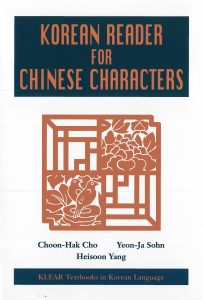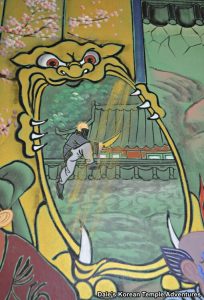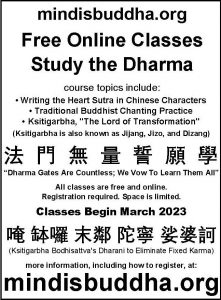Category: korean buddhism
The correct title of Jijang Bosal’s Dharani to remove fixed karma
The commonly encountered “myor op chang darani” is almost certainly wrong. This appears to be a mistake due to the mantra with a similar title associated with Kwanseum Bosal ……
“Mistake, doesn’t matter. Only make correct.”
Zen Master Seung Sahn (Primary Point VOLUME THREE, NUMBER 3 OCTOBER 1986)
北斗呪 (Mantra of the Northern Dipper)
The seven stars of the Northern Dipper are mighty gods in Heaven.
Rising, they (assemble) in the morning at the Golden Palace (of the Emperor of Heaven),
Setting, they cover the Kunlun Mountains.
They harmonize the principle with (human) law and moral order and control heaven and earth.
“These words seem to be correct and yet are wrong.”
有人云, “自心淨土, 淨土不可生, 自性彌陀, 彌陀不可見!”
此言, 似是而非也.
People say, “Your own mind is the Pure Land, so you cannot be born in the Pure Land; your own nature is Amitābha, so Amitābha cannot be
seen.”
These words seem to be correct and yet are wrong.
On Sects and Sectarianism in Chinese and Korean Buddhism
In dealing with East Asian Buddhism, Japanese and Westem scholars are
easily exposed to Japanese Buddhist sectarianism and western Christian sectarianism.
However, from the introduction of Buddhism to the period of Wonhyo, there are no
institutionalized sects that resemble Western religious sects or Japanese Buddhist sects.
For example, the scholars of the Chinese Huayan sect, actually established by Fazang,
do not have strong sectarianism, compared to Japanese Buddhist sectarianism and
western Christian sectarianism. The “Huayan sect” refers simply to the group of
scholars who are interested in Huayan Buddhism.
Four Great Vows in Hanja, Hangul, and romanized transliteration
衆 生 無 邊 誓 願 度
중 생 무 변 서 원 도
jung saeng mu byeon seo weon do
everything born without limit vow to liberate
Traditional Buddhist Chanting
Over a twelve month period, starting in March 2023, this course will cover the following six chants (we will spend two months on each chant):
Yebul / Homage to the Three Jewels
Kanzeon
Heart Sutra
Great Dharani
Kwan Seum Bosal / Jijang Bosal
Master Uisang’s Song of Dharma Nature


